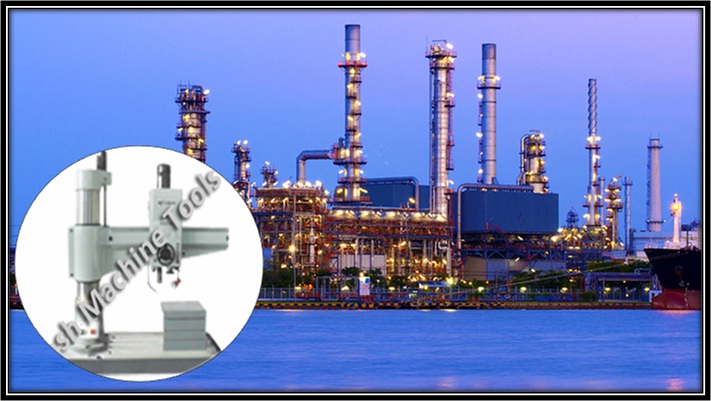Application of the Radial Drill in Petroleum Industry
The radial drill is one of the most important equipment in industry. It is an enhanced drill machine with the following components; the drill head, the arm, the column and the base. The critical operational function of the equipment is the ability of the head to rotate about the column at a radius equivalent to the arm. The height of the equipment can also be adjusted depending on the size of the work piece.
It is therefore very versatile equipment, which has wide-ranging applications especially in the oil production and conveyance. The equipment is usually set on a workbench or table, while very large types are mounted on the floor.
Advanced uses of the machine include reaming, tapping, spot facing, counter drilling. Various models have been advanced for this equipment to serve the various industries.

Drilling Works In the Petroleum Industry
The oil field and petroleum production industry poses certain special challenges. It is a heavy machinery industry, handling equipments exposed heavy corrosion and mechanical breakdowns sometimes in far off areas. Radial drill equipment is vital in numerous repairs handling very large work pieces associated with oil exploration. Some special applications include;
Countersinking
A conical cutter is fitted to the equipment to create a bevel shape or a tapered end. This process is important in creating the bore for flat-headed screws. Common angles of the counter screws are 82 degrees and 60 degrees.
Counter Boring
This is a process of enlarging the top end of a bore up to a certain depth, and creates a square shoulder on the produced bore. Counter boring is done to allow the heads of the screws to properly flush with the surface of work piece.
Spot Facing
This is a delicate process of smoothening off a round edge of the bore to create a level-sitting surface of the countersink. It is also used for surfaces such as washers, bolts and nuts to fit tightly below the surface of the work piece.
Tapping
This is also well achieved using the radial drill. This is a process of creating a thread in a drilled bore. During this process, the machine is not necessarily powered so that the chuck is turned by hand gradually until proper threads are created. Tapping of larger holes require positioning of the tap using the drill chuck and a tap wrench is used for greater power and grip to be achieved for tapping.
Reaming
This is the process of enlarging a small hole to the targeted diameter. In the petroleum and the oil field, precision is very important and this is a critical process used to achieve precision. The holes are drilled to smaller dimensions then rimmed to reach the required diameter. For greater precision, a bore should be drilled and reamed while still on the same set up.
The importance of the radial drill in the petroleum industry is critical and especially where high precision is required. The ability of the machine to accommodate different tool bits has also enhanced its applicability in the oil production and conveyance industry.
- Flat Bed CNC Lathe vs. Slant Bed CNC Lathe: Which One Is Right for Your Machining Needs?
- All Geared Radial Drilling Machines for Gulf Industries: Built for Heavy-Duty Precision
- CNC Bending Machines: A Complete Guide to Modern Sheet Metal Bending Technology
- CNC Press Brake Machines: Powering Precision Sheet Metal Bending in Modern Manufacturing
- Choosing Between Conventional and CNC Press Brakes: A Technical Comparison
- Maintaining a Chamfer Machine: Tips for Prolonged Accuracy and Performance


